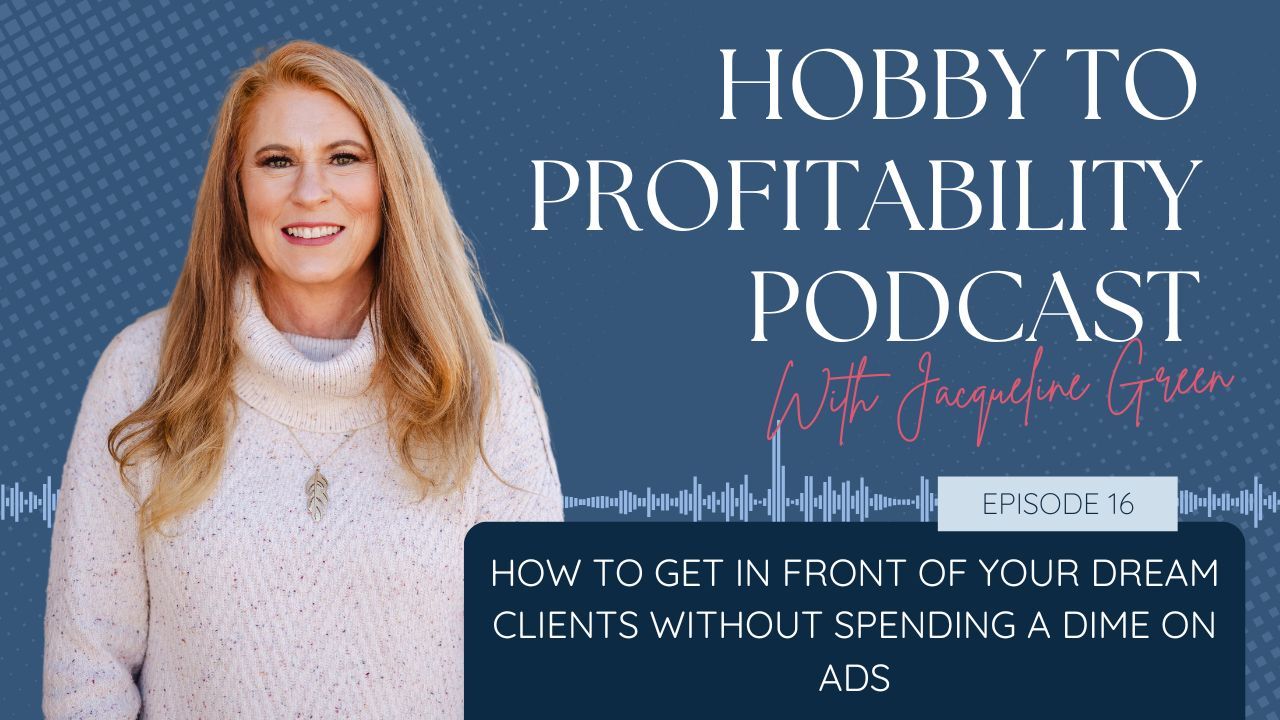Accelerate Your Business Growth by Crafting an Awesome Online Reputation
Aug 11, 2023
Last month, I gave you a few tips on building an awesome online reputation. I realized that you needed more than just three tips. In this article, we are talking about building your online presence in more detail. I am sharing three strategies to help you craft an awesome online reputation, along with tips for each strategy.
As an interior designer, your online reputation is something that should never be overlooked. Your online reputation can make or break your business because potential clients form their first impressions of you based on your online presence. Therefore, it's important that interior designers understand how to build an awesome online reputation. In this blog post, we will discuss some simple and effective strategies interior designers can use to build a strong online reputation and attract more clients.
Build a Professional Website That Converts
In today's digital age, having a professional website for your interior design business is crucial to your success. Your website is the hub of your online presence, and it's the first place potential clients will look to get more information about you. Therefore, it's important that you build a professional website that showcases: your portfolio, personal or business brand and converts visitors to new sales opportunities.
Not only does a well-crafted website showcase your portfolio and highlight your services, but it also serves as a powerful marketing tool. By incorporating elements that encourage engagement and conversion, you can turn website visitors into potential clients and ultimately generate new leads. Your website is a powerful marketing tool that can work for you even when you are sleeping.
But you may be asking, where do I start?
Building a website that converts requires thoughtful planning, strategic design, and a deep understanding of your target audience. Your overall strategy should be clearly defined and should be along the lines of attracting new leads and converting them to paying clients. Your website is not doing its job if it is not giving you new clients.
This starts with your brand. What is your brand? Clearly communicate your unique value proposition, highlighting what sets you apart from other interior designers. Next, clearly define the audience you want to attract and what problem you can help them solve. If you don’t understand their needs, then you need to learn more about the target audience. I have an article that discusses how to create buyer personas that you should read. It is important to narrow your audience as you cannot help everyone.
Now, map out your pages. Think through how someone will travel through your site. Your top navigation should help the reader learn more about you and your services. Each webpage should have compelling copy, high-quality images, and a call to action. You need to give people a reason to hire you. The best way you can do this is by leaving the visitor with the feeling that you can help them solve their problem.
Your “About Me” page should tell a compelling story, showcasing your expertise and passion for interior design. Don’t just use a stale bio. This is boring. Write a story that screams that I am passionate about design and helping my clients. Think through why you got into the industry or why you love helping clients. This helps the viewer get to know you on a deeper level.
Your website images should be targeted at the audience you are trying to attract. Don’t add kitchen images if you don’t design kitchens. Use your images to be crystal clear on how you can help your potential clients. Refresh your images every few months. Don’t be afraid to remove images you don’t like or seem a bit outdated.
Pro Tip: Name each image using keywords to help search engines understand who might want to see it. I also add my name and/or business name when naming my images so that I can build a stronger brand when someone Googles me or my company.
Consider adding a blog to your website. This is a great way to show your authority and share valuable content that can position you as an expert. Don’t worry about giving away your trade secrets. The people who are going to read your blog and steal your ideas weren’t going to hire you in the first place. The audience you want to attract wants to know more about your process, experience, expertise, and even who you are as a person. A blog gives you the opportunity to share that with your viewers. A blog can also help you with search engine optimization. Search engines love new, fresh content. They will give more credibility to sites that are continuously updating than stale, out-of-date websites.
Don’t forget the call to action and follow-up plan. What do you want the visitor to do? Call you, email you, or fill out a form. I highly recommend having the visitor fill out a form, collecting their name and email at a minimum. You may want to consider collecting phone numbers if you plan on calling them. By collecting their email, you can stay in touch through a newsletter or emails to help nurture them further.
After someone fills out a form, an automatic email should be sent immediately. You can do this is most websites or email programs. This lets the prospect know that you received their form and provides additional information related to the call to action.
Elevate your Brand Through Social Media
Social media is another crucial aspect of your online presence as an interior designer. It is essential for a few reasons. First, it's a great way to showcase your work. You can post photos and videos of your designs and people will be able to see the work you've done.
Second, it's a great way to connect with other professionals in your industry. You can follow other interior designers, architects, and builders and get inspiration for your work. You can also connect with potential clients and even collaborate with other professionals on projects. Finally, it's a great way to build your brand. By posting regularly and engaging with your followers, you can build a following and create a recognizable brand.
The first step in building your online presence is to determine which social media platforms will work best for you. You should have profiles on major social media platforms where your customers hang out. This is an important note – rather than waste time on all platforms, choose one or two that will reach your potential clients. If you are new to social and not sure which platform, I have an article on picking the right social platform.
Once you’ve chosen your platforms, the key to growing your online presence is to post regularly. This means creating a content plan that includes everything from photos of your latest projects to behind-the-scenes glimpses into your design process. Don’t be afraid to mix things up with fun, engaging content, such as design challenges or polls that will keep your followers interested and engaged.
It's important to create a consistent brand and aesthetic on your social media profiles so that people will recognize your work. You can use tools like Canva to create graphics and templates that you can use on all your social media profiles.
Plan to post 2 to 3 times per week at a minimum. Mix in a little personal with business. This allows your audience to get to know you better. Interior design, especially for residential, is somewhat intimate. You learn and understand your clients on a deeper level, so it is important you share your deeper side as well.
I recommend batching your time to create a week to a month of social content that you can easily schedule or grab when needed. Batching time is blocking out two to four hours to work on one priority. If you batch your social media posts, it will be much easier to post on days when you are busy or just not in the mood. We use Later.com to schedule and post our social media posts. Then we work two to four weeks out.
Social media is all about engagement, so it’s crucial to engage with your audience actively. This means responding to comments, following other designers and industry professionals, and leveraging hashtags to reach a wider audience. Engaging with other designers and influencers in your industry can also help you build connections and create opportunities to collaborate on projects. By engaging with your followers, you can build a relationship with them and create a loyal following.
It's important to measure your success on social media so that you can see what's working and what's not. You can use tools like Google Analytics or Instagram Insights to see how many people are engaging with your posts, what times of day are best to post, and what types of content are most popular. By measuring your success, you can adjust your strategy to be more effective.
Leverage Social Proof with Testimonials and Online Reviews
Nothing strengthens your online reputation better than someone else’s signing your praise. This starts with creating happy clients. You should strive to make sure that every client is happy with your services and meets or exceeds their expectations. Happy customers are the ones that will spread the word about your services, and this will lead to new clients and potential testimonials.
The best way to get testimonials is to ask for them! After you have completed a project, you can ask the client to write a short review of the work you did and post it on your website. You can also ask for their permission to use their name and testimonial in your marketing materials. If your client agrees, it will be a great way to showcase your work and skills on your website and social media platforms.
Another great way to get testimonials is through online reviews. Encourage your clients to leave reviews on Google, Yelp, or any other platform you use. Social proof has a huge impact on people's purchasing decisions, and having positive reviews can help improve your online reputation and encourage potential clients to reach out to you.
Building a strong online presence is crucial for interior designers looking to grow their businesses and gain new clients. A great online reputation takes time and effort, but it's an investment that can yield great returns. By building a professional website, utilizing social media, gathering positive reviews, engaging with your followers, and monitoring your online reputation, you'll be able to attract more clients and grow your interior design business. Remember, your online reputation is something that needs to be actively managed, so make sure you are always looking for ways to improve it.
Sign Up for Our Monthly Newsletter
Get helpful career, business, and design tips right in your inbox each month.
At Behind the Design, we are committed to building a stronger design community by reimagining education, training, and support for interior designers. Through our various software training options, educational articles covering everything from leadership to marketing, and soon Continuing educational courses, we are committed to helping you. Join our newsletter to get the latest education and training updates.










